White Spots On Skin (Vitiligo) – Causes, Symptoms, & Remedies
Understand the factors behind this skin condition and appropriate ways to manage it.

Image: Shutterstock
Vitiligo is a chronic skin condition where the cells’ ability to produce melanin is damaged, resulting in white spots on your skin. People who struggle with vitiligo every day feel low and wear clothes that cover the patches. Thankfully, a few home remedies for vitiligo can reduce the appearance of the white patches. If you have been hiding your favorite dress away, now is the time to take it out and wear it with pride. In this article, we dive deeper into what vitiligo is and what causes a person to develop this condition along with a few natural remedies and foods one can follow to reduce the white, skin patches.
In This Article
What Is Vitiligo?
Vitiligo (or leucoderma) is a skin disorder characterized by the appearance of discolored patches on your skin.
These patches can appear on different parts of your body.
Vitiligo occurs as a result of the poor functioning of melanocytes, cells that produce melanin. Melanin is responsible for the pigmentation of your skin. During vitiligo, melanocytes are destroyed, and this hampers melanin production, leading to skin discoloration.
- Non-Segmental Vitiligo: It is also known as generalized vitiligo. It is the more common type of vitiligo and is characterized by patches appearing all over the body, especially the face, neck, scalp, and genital area.
- Segmental Vitiligo: It is also known as unilateral or localized vitiligo). It is characterized by the loss of pigment in specific areas of the skin. Unlike generalized vitiligo, this affects only one side of the body. It often starts early in life and may take some time to stabilize. While there is limited research regarding its exact cause, it is said to be an autoimmune response. The treatment options include topical corticosteroids and phototherapy.
 Did You Know?
Did You Know?An online survey was conducted on 40,888 participants to understand the prevalence of vitiligo in the general American population. The study found that self-reported prevalence was 1.38% with 0.77% for diagnosed and 0.61% for undiagnosed. After an evaluation of photos submitted by the participants, the clinician-judged vitiligo prevalence was 0.76% with 0.46% for diagnosed and 0.29% for undiagnosed.
Vitiligo can affect the mucous membranes present inside your mouth, nose, and eyes. In the following section, we will explore the causes of vitiligo.

And, while there are various types of vitiligo, let us explore the one that is not so common, which is segmental vitiligo. Scroll down to know more about it.
Key Takeaways
- Hereditary, sun exposure and emotional distress may cause vitiligo.
- Vitiligo can appear on different parts of your body, including the armpits, groin and nostrils,
- Following a balanced diet and drinking adequate water may help reduce the symptoms of vitiligo by boosting your immunity.
- Ginkgo biloba, neem oil, turmeric, and pomegranate leaves are some of the natural home remedies that may help reduce the appearance of these white patches.
- We recommend applying sunscreen and covering your skin adequately before stepping out to minimize the signs of vitiligo to some extent.
Segmental Vitiligo
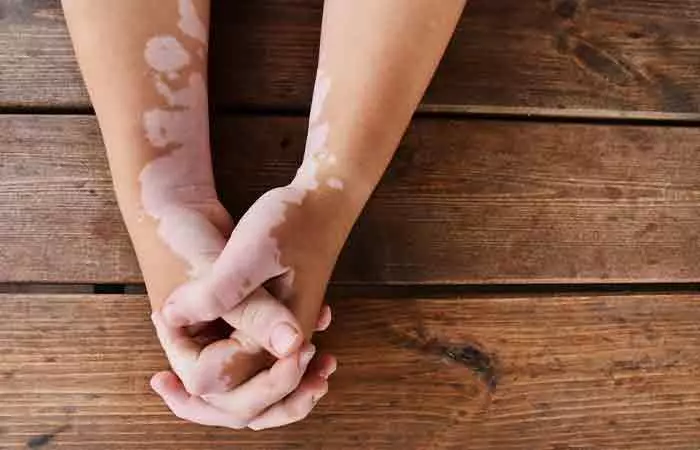
In the following section, we will explore the causes of vitiligo.
What Causes Vitiligo?
Vitiligo is an autoimmune disease, where your immune system mistakes the melanocytes in your skin as a foreign body and attacks them.
This destruction of melanocytes impairs melanin production, leading to hypopigmentation. According to Dr. K. Harish Kumar, MD DVL, vitiligo can also be genetic.
The exact cause of vitiligo is unknown. While some sources blame excessive sun exposure, others link vitiligo to severe emotional distress. However, these claims are not supported by the medical community.
What Are The Symptoms Of Vitiligo?
The primary sign of vitiligo is the occurrence of skin blemishes or white patches or on your skin.
These patches usually appear on the areas of the skin frequently exposed to the sun. They can be seen on your hands, feet, face, lips, and arms. They may also appear in the following areas:
- Torso
- Armpits
- Groin
- Around your mouth
- Nostrils
- Around your eyes
- Rectal areas
Another sign of vitiligo is premature graying of hair.
People with a dark complexion may observe skin lightening inside their mouth.
These symptoms could be treated, and the appearance of the patches could possibly be reduced. The following home remedies will tell you how.
Home Remedies For Vitiligo
1. Ginkgo Biloba Paste
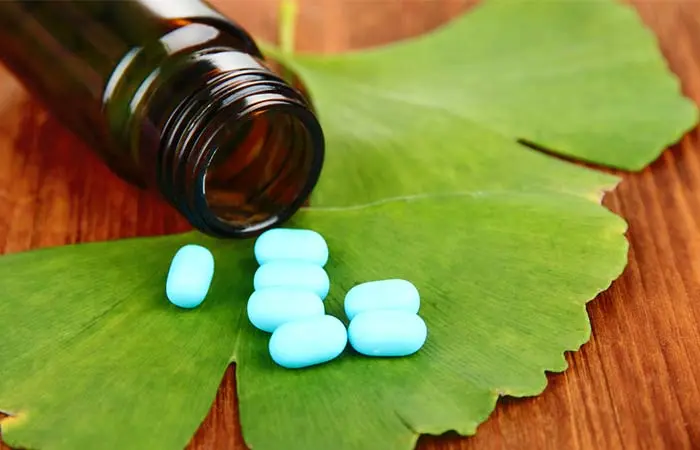
Ginkgo seed extract contains bioactive compounds that exhibit immunomodulatory properties. It can help induce repigmentation on areas where your skin has lost color (1). This means that your skin will slowly show signs of reduced white patches.
You Will Need
Ginkgo biloba extract supplements
What You Have To Do
Take the supplements as prescribed by your doctor.
How Often You Should Do This
Take the supplements until the prescribed dosage is completed.
2. Neem Oil

Neem oil may reverse the effect of depigmentation, which is a result of vitiligo (2). The immunomodulatory effects of neem extracts may reduce the occurrence of white patches on your skin.
You Will Need
2-3 drops of neem oil
What You Have To Do
- Take a few drops of the neem oil on a cotton pad and rub it on the patches.
- Wash after 30 minutes.
How Often You Should Do This
Repeat daily to see a visible change.
3. Turmeric

Turmeric contains curcumin, an important antioxidant that may have some relieving effect on vitiligo (3).
You Will Need
- 1 teaspoon of turmeric powder
- 1 teaspoon of mustard oil
What You Have To Do
- Make a paste of turmeric powder by mixing it with mustard oil.
- Apply the mixture to your skin and leave it on. Wash after 30 minutes.
How Often You Should Do This
Repeat 3-4 times a week.
4. Ginger Juice And Red Clay

Ginger juice is a rich source of phytochemicalsi Bioactive nutrient chemicals found in plants that may help prevent various chronic diseases, including cancer. that may help reduce discoloration (4). The topical application of ginger juice with red clay can help increase the blood flow to the various spots in your skin and may induce pigmentation.
You Will Need
- 1 tablespoon of ginger juice
- 1 teaspoon of red clay
What You Have To Do
- Make a paste by mixing the red clay with ginger juice.
- Apply this to the patches. Wash after 30 minutes.
How Often You Should Do This
Repeat 3-4 times a week.
5. Radish Seeds And Apple Cider Vinegar

Radish seeds, when used as a paste, may help reverse symptoms of vitiligo. The bioactive compounds present in radish seeds and vinegar can help reduce discoloration and reduce white patches (5), (4).
You Will Need
- 1 tablespoon of radish seeds
- 2-3 tablespoons of ACV
What You Have To Do
- Powder the radish seeds and make a paste by mixing a few tablespoons of apple cider vinegar.
- Apply this paste to the patches and wash after 20 minutes.
How Often You Should Do This
Do this at least 3 times a week.
6. Pomegranate Leaves

Pomegranate leaves are rich sources of bioactive compounds that can help reduce the effect of vitiligo. The leaves can be used as a remedy to reduce the associated discoloration (6).
You Will Need
8-10 pomegranate leaves
What You Have To Do
- Sun-dry the pomegranate leaves.
- Grind the dried leaves and take about 8 grams of this powder every day with water.
How Often You Should Do This
Repeat this every morning.
7. Green Tea

Green tea is a rich source of polyphenols. These polyphenols exhibit immunomodulatory properties and may help reduce the appearance of discolored patches associated with vitiligo (7).
You Will Need
- A green tea bag
- A cup of warm water
What You Have To Do
- Take a green tea bag and steep it in a cup of boiled water.
- Consume the warm tea.
How Often You Should Do This
You can repeat this 1-2 times daily.
8. Bakuchi Oil
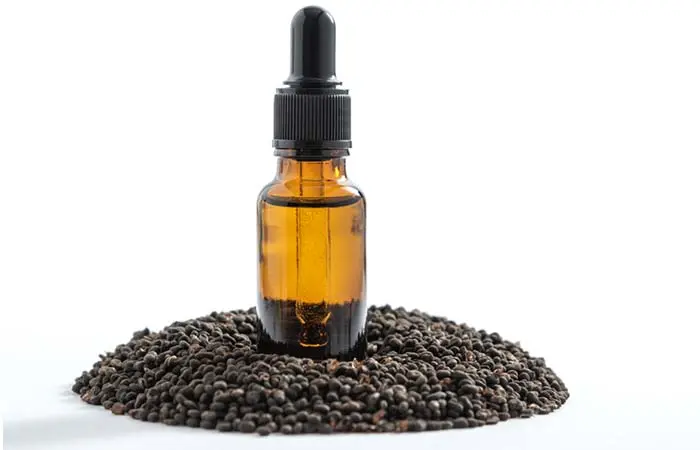
The powder made from the seed of bakuchi (or Psoralea corylifolia) has been observed to help combat vitiligo (8). It contains phenolic compounds that can induce repigmentation.
You Will Need
- 110 grams of bakuchi seeds
- Ginger juice
What You Have To Do
- Soak the bakuchi seeds in ginger juice for three days.
- Dry them and grind them into powder.
- You can consume 1 gram of this powder with milk.
How Often You Should Do This
Repeat this daily for 4 weeks.
9. Black Cumin Oil
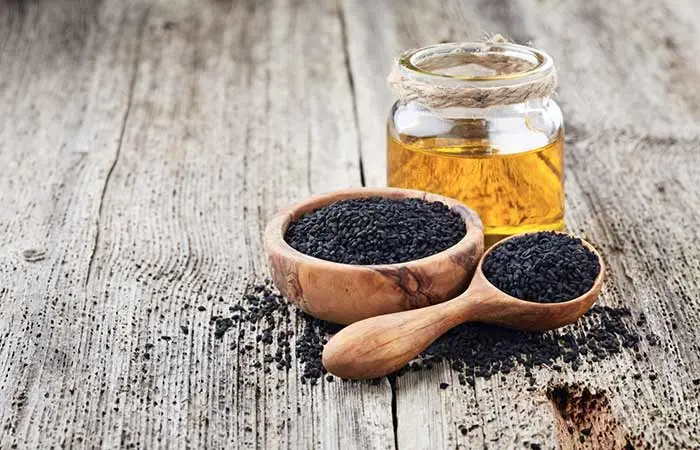
Black cumin oil contains thymoquinone, a bioactive compound (9), (10). It can prevent oxidative stress and possibly treat the symptoms of vitiligo.
You Will Need
1 teaspoon of black cumin seed oil
What You Have To Do
- Take some black cumin seed oil on a cotton pad.
- Rub this on the white patches and wash off after half an hour.
How Often You Should Do This
Repeat this daily for 3-4 months.
10. Black Pepper And Clarified Butter
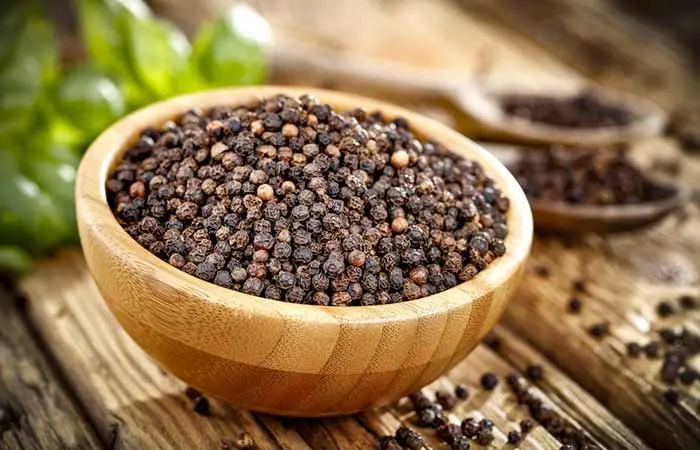
Black pepper is rich in piperinei An alkaloid with potential health benefits like reduced insulin resistance, decreased inflammation, and enhanced nutrient absorption. , a compound that may help treat the symptoms of vitiligo (11). The clarified butter can reduce the pungent flavor of the pepper and make it more palatable.
You Will Need
- 1 teaspoon of black pepper kernels
- 1-2 tablespoons of clarified butter
What You Have To Do
- Simmer the black pepper kernels in the clarified butter.
- Consume this mixture with your food.
How Often You Should Do This
Repeat this daily for a few weeks.
These simple remedies can help you cope better with the symptoms of vitiligo. In addition to these, you also have a host of medical options that you can consider to treat vitiligo.
Medical Treatment Options For Vitiligo
There are a few medical treatment options available to treat vitiligo. The choice of treatment depends on a couple of factors:
- Number of patches on your skin
- How many areas of your skin have these patches
Not every treatment can suit all due to potential side effects. Some treatments can take long to show results, and some may not work as desired. These treatment options include surgical, medical, and other procedures.
Medical options include:
- Medical creams or ointments
- Treatment using UV light
Surgical options include:
- Skin grafting to treat smaller patches of vitiligo
- Skin tattoo
Other options include:
- Use of sunscreen
- Use of cosmetics to conceal the patches
 Trivia
TriviaApart from the medical treatment options, a proper diet may also help.
What Diet Can I Follow For Treating Vitiligo?
Following a balanced diet, along with drinking adequate water, can take you a long way on the road to recovery. Since vitiligo is an autoimmune disease (as opposed to albinism, which is a genetic disorder), you must consume foods that help boost your immunity, including those containing phytochemicals, antioxidants, and beta-carotenei A plant pigment with possible health benefits like promoting eye health, improving skin appearance, and protection from free radicals. .
The following foods can help:
- Fruits like bananas and apples
- Green leafy vegetables such as kale, spinach, and lettuce
- Chickpeas
- Root vegetables like radishes, carrots, and beetroot
- Figs
The above-mentioned methods can help you better deal with vitiligo. That said, can you actually prevent vitiligo?
Can I Prevent Vitiligo?
Vitiligo cannot be prevented. But there are a few precautions you can take to reduce the appearance of the patches. These include:
- Use sunscreen before you step out during the day. This can help protect your skin from sunburn and photodamagei Skin changes, such as fine lines, wrinkles, pigmentation, and roughness, that occur due to prolonged exposure to solar radiation. . Sunscreen mitigates tanning and can decrease the harm UV exposure causes to your skin.
Annie Dillon, a blogger, shared her daughter’s experience of developing vitiligo and how that has changed the way she does things. She writes that her daughter always wears a hat and protective sunglasses when going outside and that she, her husband, and her kids slather up sunscreen every time they go out. In her blog, she mentioned, “All five of us now slather on 50+ SPF sunscreen before heading out the door (I learned just how quickly the middle burns now – and I will not let that happen again). No longer do we purchase the cute little bikini – rash guards are our new choice as is a sun tent with protective material (i).”
- Cover your skin adequately, especially those parts that are affected by vitiligo. You can use concealing products that are dermatologically approved to reduce the contrast in skin tone.
- Avoid getting your skin tattooed or inked. If it is not related to the treatment of vitiligo, you should not subject your skin to the damage caused by tattooing as this may cause the appearance of a new patch within one or two weeks.
Infographic: Types Of Vitiligo
Vitiligo is a skin disorder caused due to the poor functioning of melanocytes. It varies in the amount of skin affected and the area it occurs. Therefore, the condition is classified into different types based on its appearance and pattern.
Check out the infographic to know the types of vitiligo.
Some thing wrong with infographic shortcode. please verify shortcode syntax
Vitiligo is a condition where the cells cannot produce melanin, leading to white spots on your skin. Though harmless, this condition can lower your confidence and make you conscious about your appearance. Genetic reasons, sun exposure, emotional distress can cause vitiligo. However, the exact cause of vitiligo is not known. These white spots can appear on your arms, hands, feet, face, and lips. A few home remedies may help reduce the appearance of these white spots, like ginkgo seeds, neem oil, turmeric, radish juice, and pomegranate leaves. However, consult your doctor if the symptoms persist.
Do you have vitiligo? How do you deal with it? Share your thoughts with us by leaving a comment in the box below.
Frequently Asked Questions
How quickly does vitiligo spread?
It depends on the case. While it can spread fast in some cases, it can take years to spread in a few others. Some individuals also stated that their vitiligo patches did not spread at all.
What triggers vitiligo?
Studies still haven’t found what triggers vitiligo, but there are claims that people with a genetic predisposition to vitiligo may develop it in their 20s or 30s.
Is sunlight good for vitiligo?
People with a lighter skin tone who have vitiligo must not expose their skin to excess of sunlight (may cause sunburns or long-term photodamage). You must use a strong, waterproof sunscreen to shield your skin from the harmful sun rays.
Is vitiligo a type of cancer?
No, vitiligo is not cancer. It is an autoimmune disease in which certain parts of your skin lose pigmentation.
Can I get a tattoo if I have vitiligo?
Any kind of trauma or injury to the skin with vitiligo patches may result in an increased number of patches over time. This is true for patients whose vitiligo is actively spreading. Therefore, it is best to avoid getting a tattoo.
Is vitiligo a serious disease?
No, vitiligo isn’t a life-threatening disease. However, people suffering from it may have an increased risk of developing mental health issues like stress and anxiety (12), (13).
Can vitamin D reverse vitiligo?
Yes, vitamin D may help slow the progression of vitiligo by increasing the tyrosinase activity and melanogenesis process. This may help in repigmentation with individuals with vitiligo (14).
How can you tell the difference between white spots and vitiligo?
Vitiligo often starts by appearing as a pale patch on the skin and eventually turns white. Unlike vitiligo, white spots disappear on their own. So, if you notice white patches that are taking too long to go away, consult a dermatologist for further diagnosis.
Are white spots on the skin serious?
White spots can be harmless or indicate a condition like vitiligo. If you are noticing changes in your skin, it’s best to see a doctor for a clear diagnosis.
How can I tell if I have vitiligo or another condition?
Only a dermatologist can confirm if it’s vitiligo, as other conditions can cause similar white patches. They may examine your skin and run tests if needed.
Some thing wrong with illustration image shortcode. please verify shortcode syntaxReferences
Articles on StyleCraze are backed by verified information from peer-reviewed and academic research papers, reputed organizations, research institutions, and medical associations to ensure accuracy and relevance. Read our editorial policy to learn more.
- Effectiveness of oral Ginkgo biloba in treating limited, slowly spreading vitiligo. Clinical and Experimental Dermatology, US National Library of Medicine, National Institutes of Health.
https://pubmed.ncbi.nlm.nih.gov/12780716/ - Herbal Remedies of Azadirachta indica and its Medicinal Application, Journal of Chemical and Pharmaceutical Research.
https://www.jocpr.com/articles/herbal-remedies-of-azadirachta-indica-and-its-medicinal-application.pdf - Tetrahydrocurcuminoid cream plus targeted narrowband UVB phototherapy for vitiligo: a preliminary randomized controlled study., Photomedicine and Laser Surgery, US National Library of Medicine, National Institutes of Health.
https://pubmed.ncbi.nlm.nih.gov/20961233/ - Various Treatments for Vitiligo: Problems Associated and Solutions, Journal of Applied Pharmaceutical Science.
https://www.japsonline.com/admin/php/uploads/1378_pdf.pdf - Plants Used in the Treatment of Leucoderma by the Tribals of Yerramalai Forest of Kurnool District, Andhra Pradesh, India
https://www.researchgate.net/publication/259764245_Plants_Used_in_the_Treatment_of_Leucoderma_by_the_Tribals_of_Yerramalai_Forest_of_Kurnool_District_Andhra_Pradesh_India - Plants Used in the Treatment of Leucoderma by the Tribals of Yerramalai Forest of Kurnool District, Andhra Pradesh, India, The Journal of Ethnobiology and Traditional Medicine, ResearchGate.
https://www.researchgate.net/publication/259764245_Plants_Used_in_the_Treatment_of_Leucoderma_by_the_Tribals_of_Yerramalai_Forest_of_Kurnool_District_Andhra_Pradesh_India - The therapeutic effects of EGCG on vitiligo. Fitoterapia, US National Library of Medicine, National Institutes of Health.
https://pubmed.ncbi.nlm.nih.gov/25128425/ - Fabrication of anti-vitiligo ointment containing Psoralea corylifolia: in vitro and in vivo characterization, Drug Design, Development and Therapy, US National Library of Medicine, National Institutes of Health.
https://www.ncbi.nlm.nih.gov/pmc/articles/PMC5125804/ - Effectiveness of topical Nigella sativa for vitiligo treatment., Dermatologic Therapy, US National Library of Medicine, National Institutes of Health.
https://pubmed.ncbi.nlm.nih.gov/31025474/ - A review on therapeutic potential of Nigella sativa: A miracle herb, APJTB, US National Library of Medicine, National Institutes of Health.
https://www.ncbi.nlm.nih.gov/pmc/articles/PMC3642442/ - The effect of topical piperine combined with narrowband UVB on vitiligo treatment: A clinical trial study. Phytotherapy Research, US National Library of Medicine, National Institutes of Health.
https://pubmed.ncbi.nlm.nih.gov/29781089/ - Vitiligo, US National Library of Medicine, StatPearls, US National Library of Medicine.
https://www.ncbi.nlm.nih.gov/books/NBK559149/ - Vitiligo and anxiety: A systematic review and meta-analysis, PLoS One, ResearchGate
https://www.researchgate.net/publication/345702583_Vitiligo_and_anxiety_A_systematic_review_and_meta-analysis
- Vitamin D Deficiency in Patients With Vitiligo: A Cross-Sectional Study From Basrah, Iraq, Cureus, US National Library of Medicine
https://www.ncbi.nlm.nih.gov/pmc/articles/PMC8790802/#:~:text=Studies%20suggest%20that%20vitamin%20D3,vitiligo%20%5B13%2C14%5D.
Read full bio of Dr. K. Harish Kumar
Read full bio of Sucharita Mishra
Read full bio of Ramona Sinha
Read full bio of Swathi E





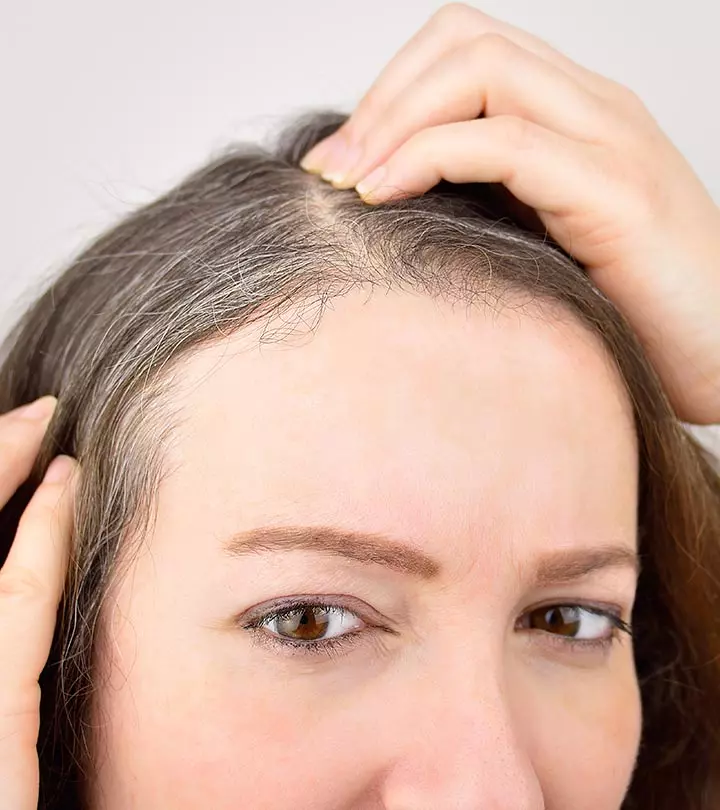
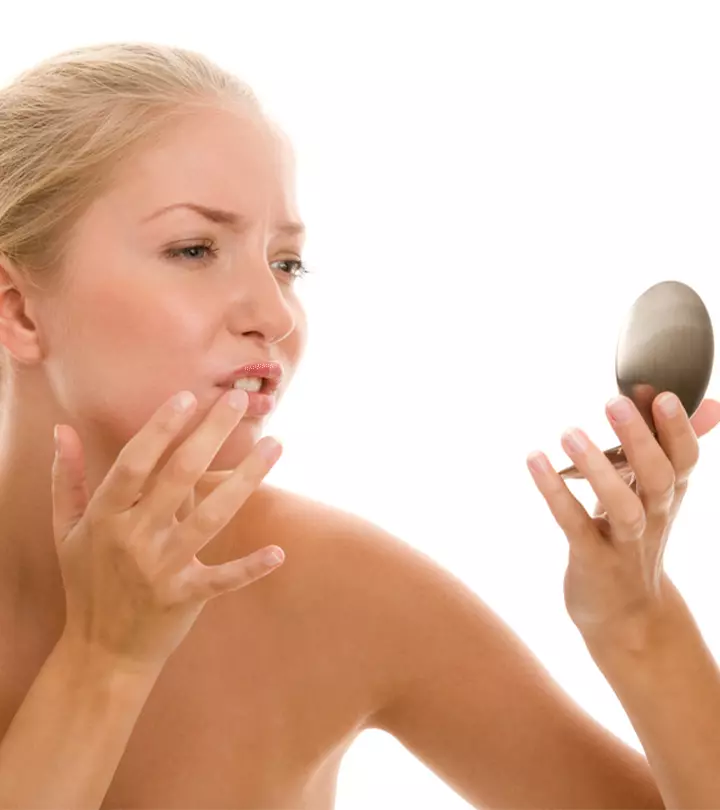
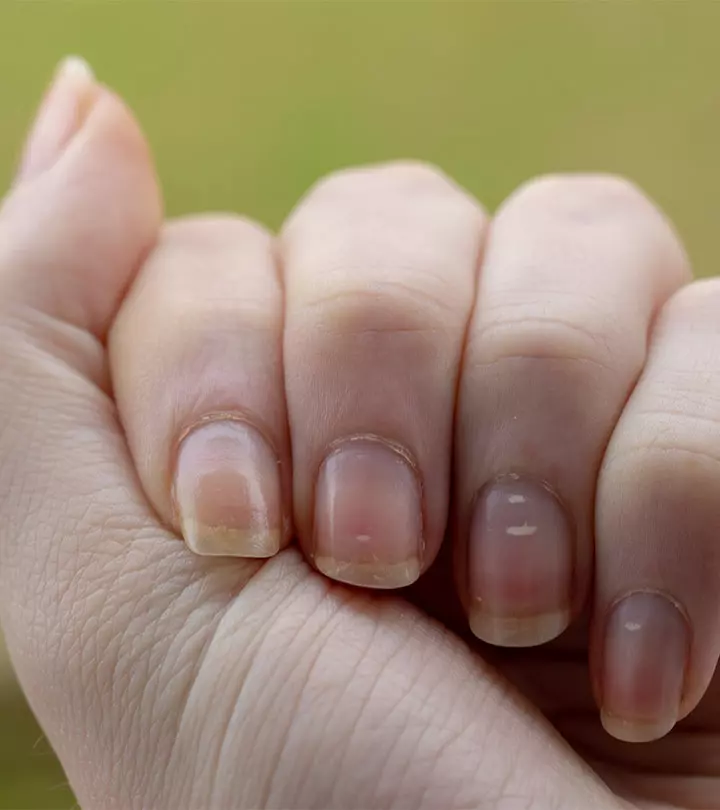
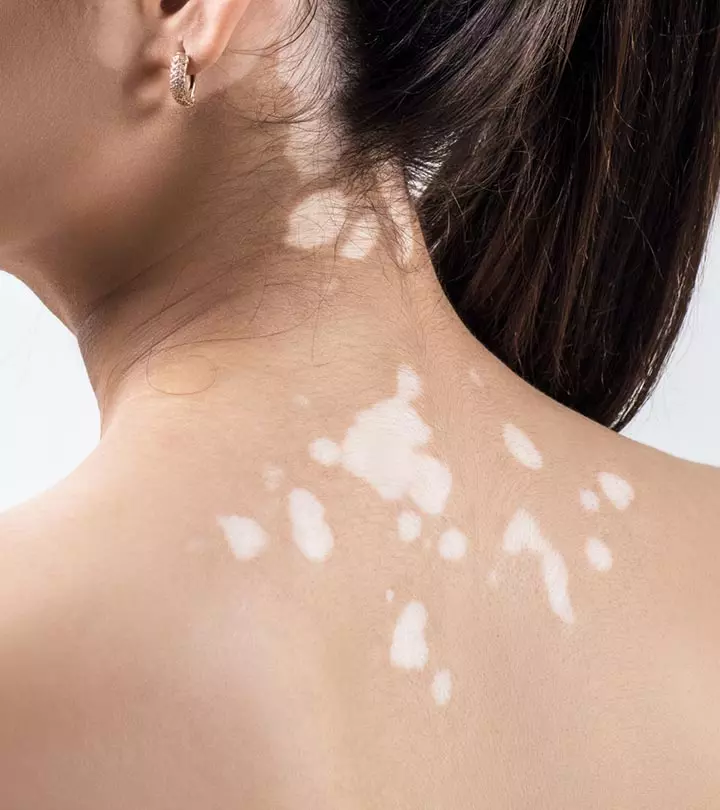
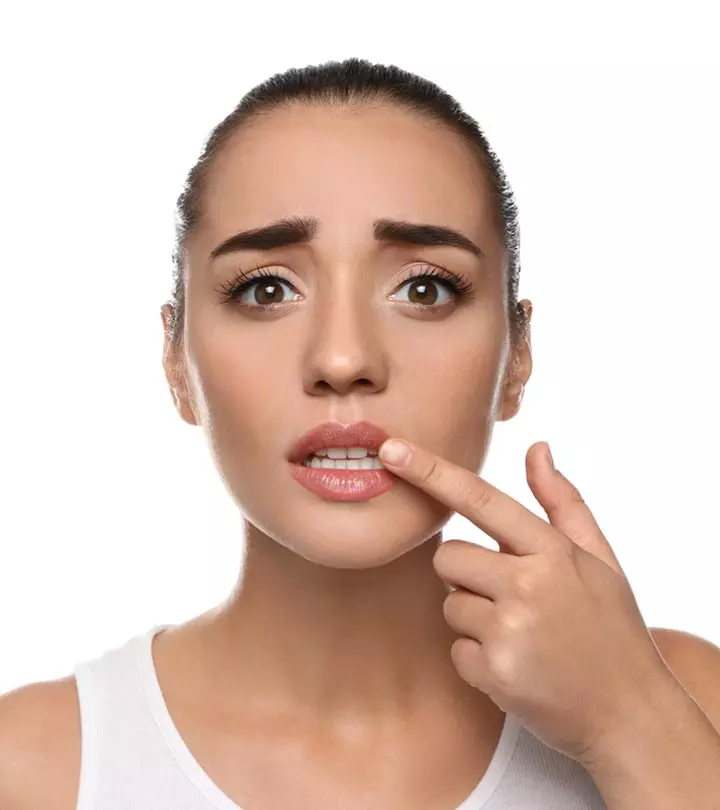
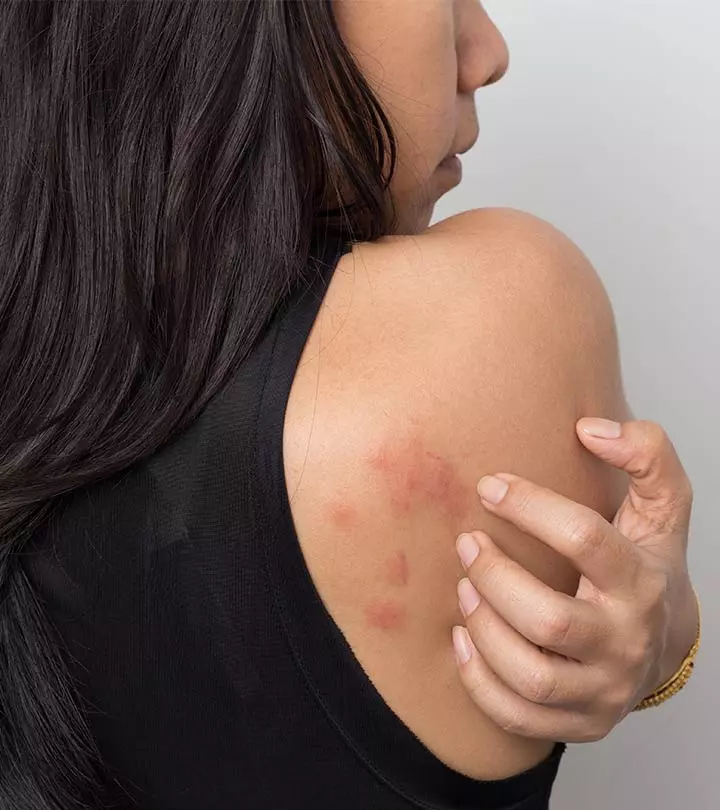
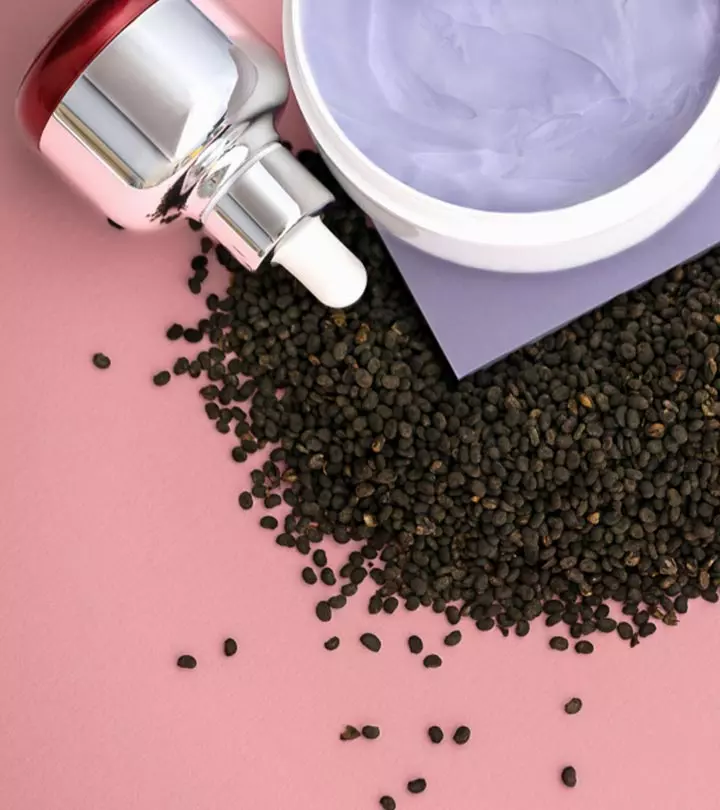

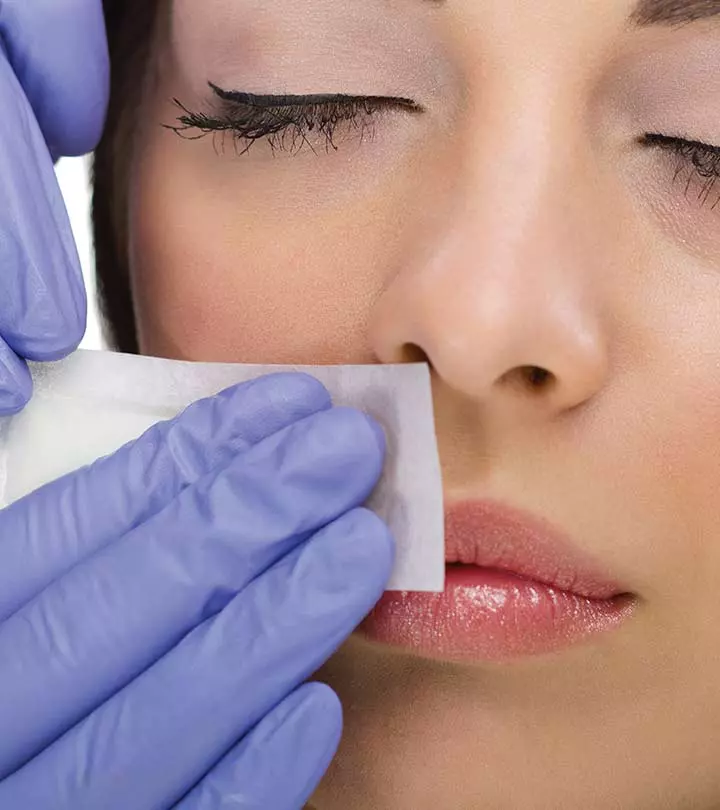
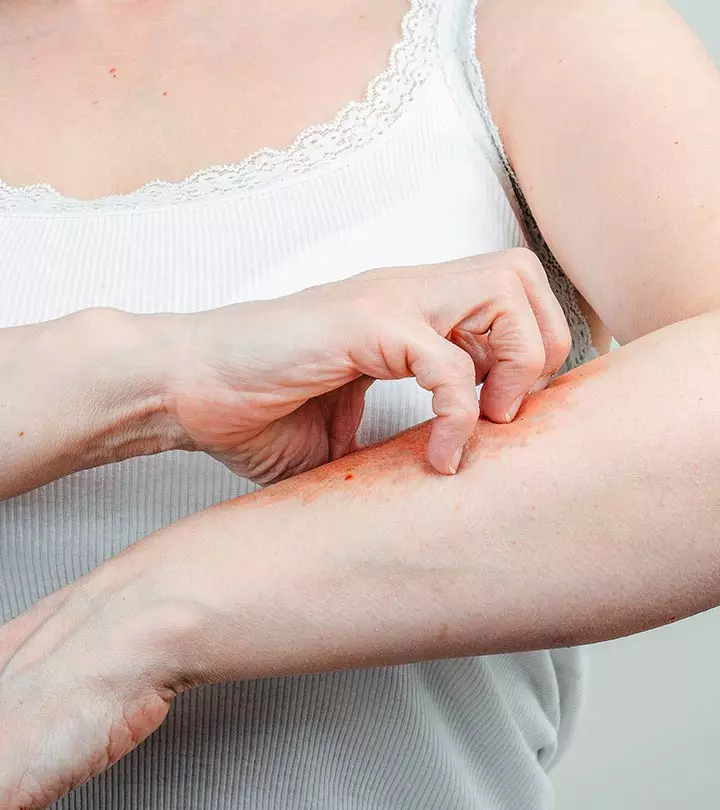
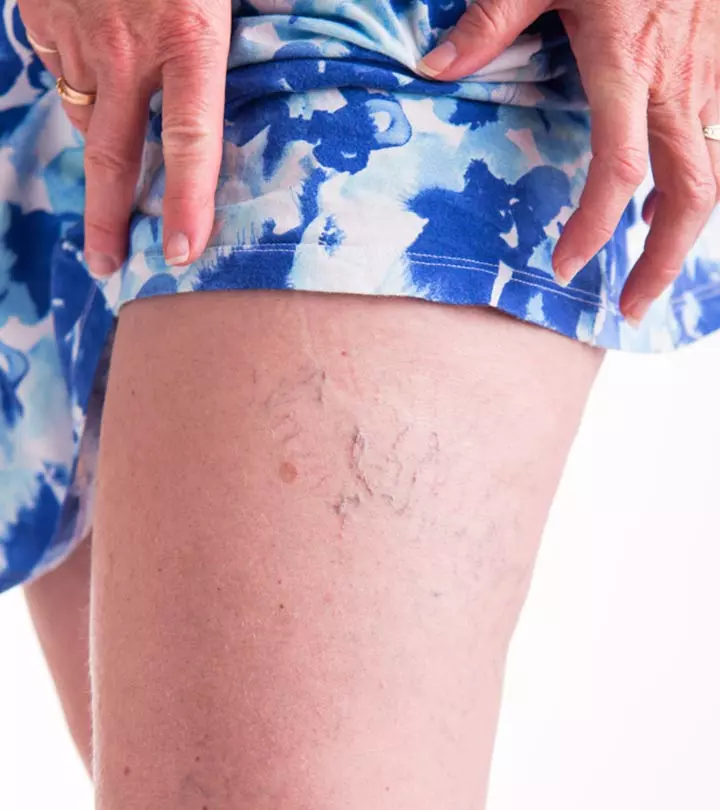
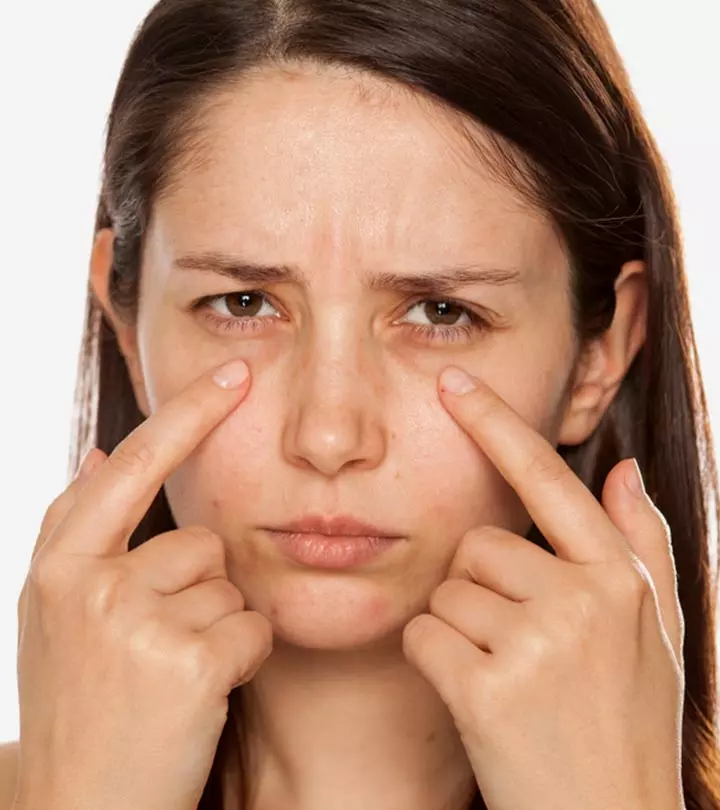

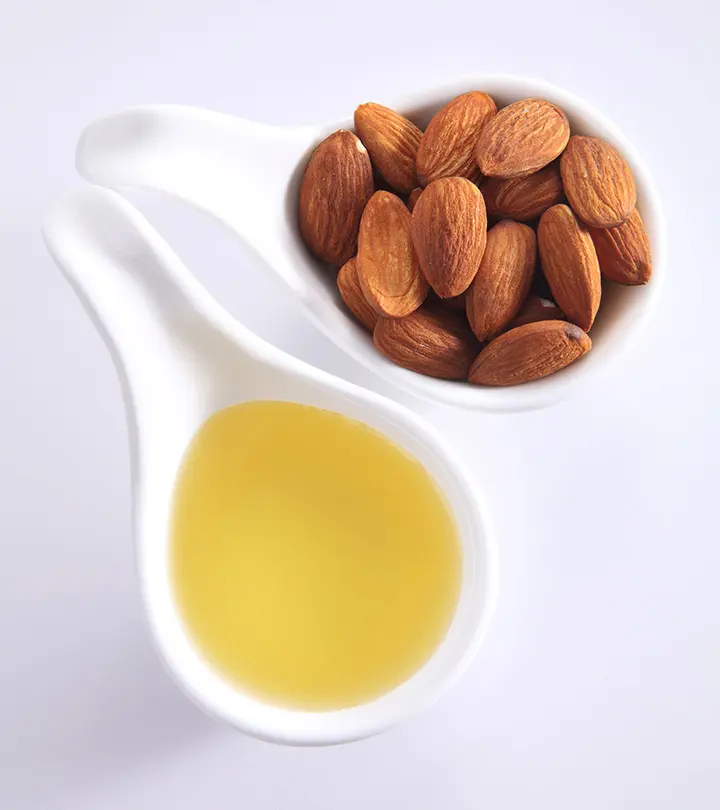
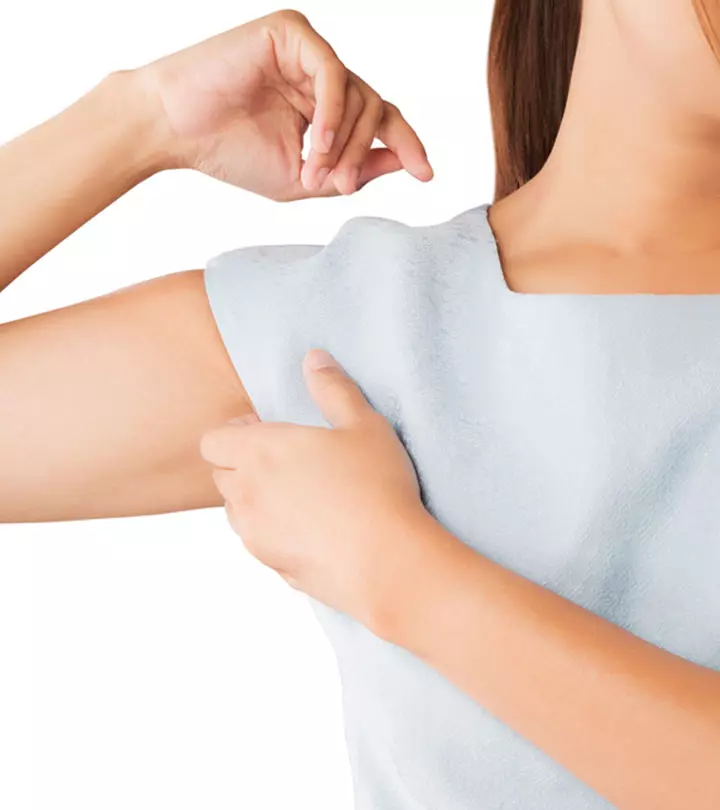

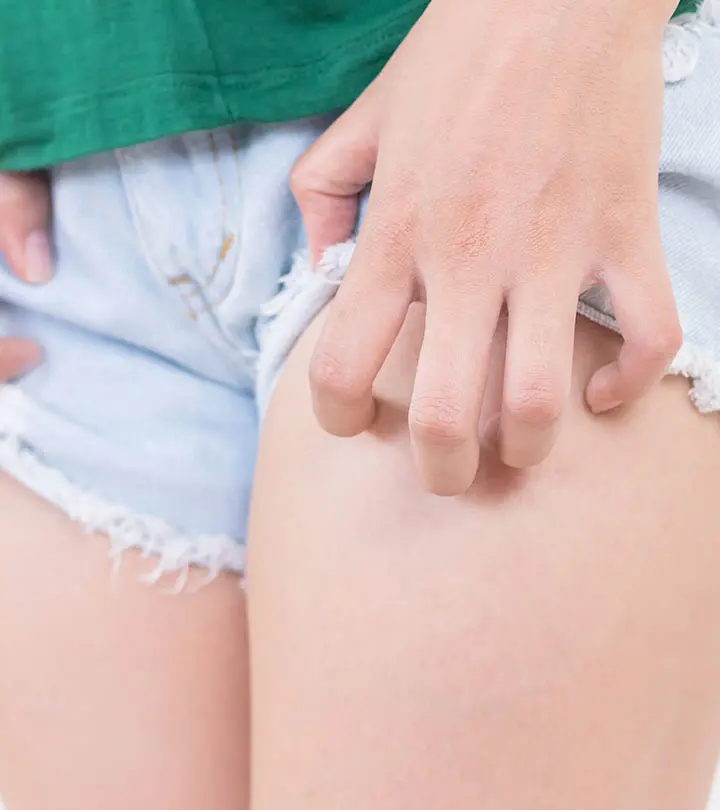
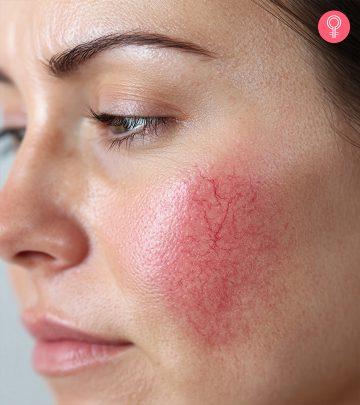

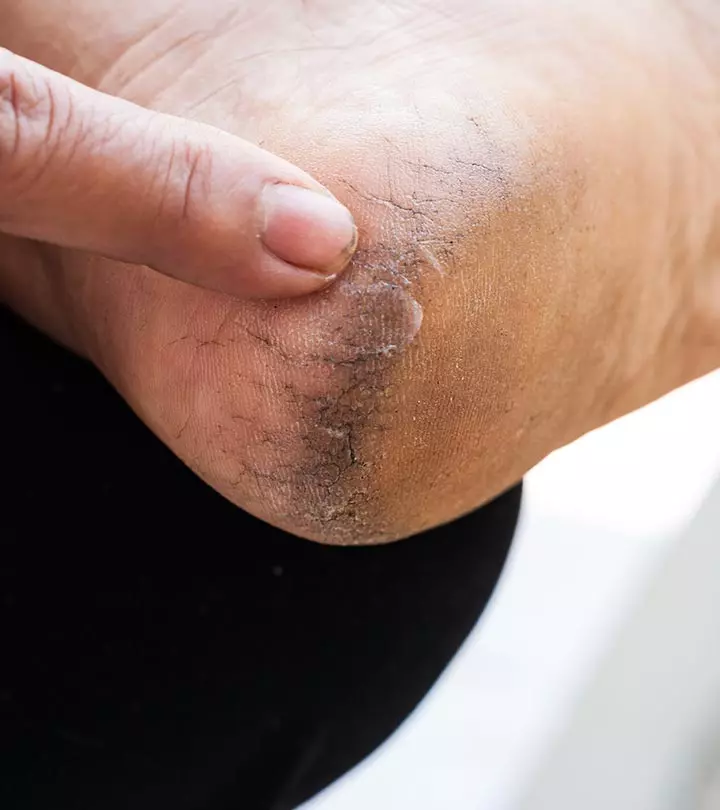
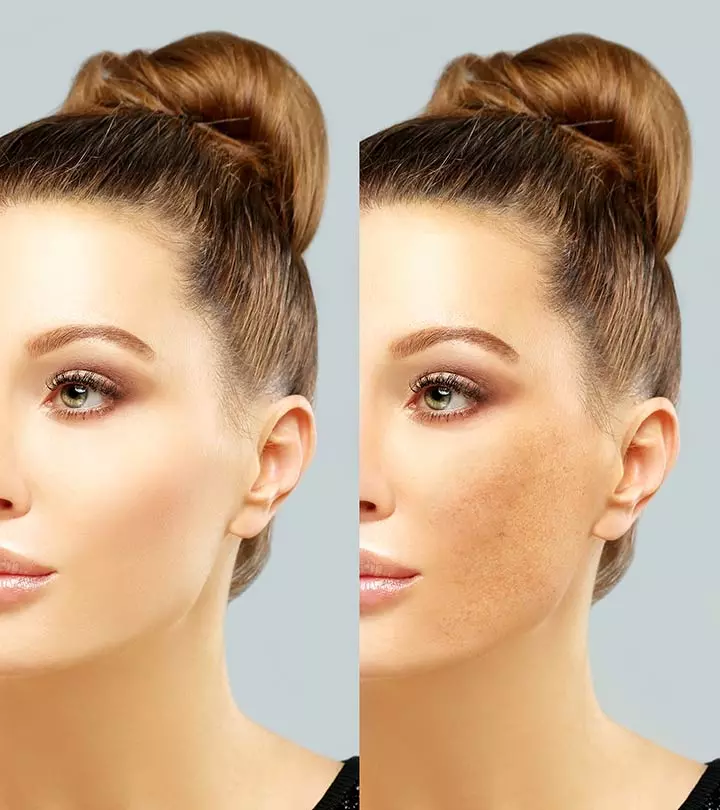
Community Experiences
Join the conversation and become a part of our empowering community! Share your stories, experiences, and insights to connect with other beauty, lifestyle, and health enthusiasts.